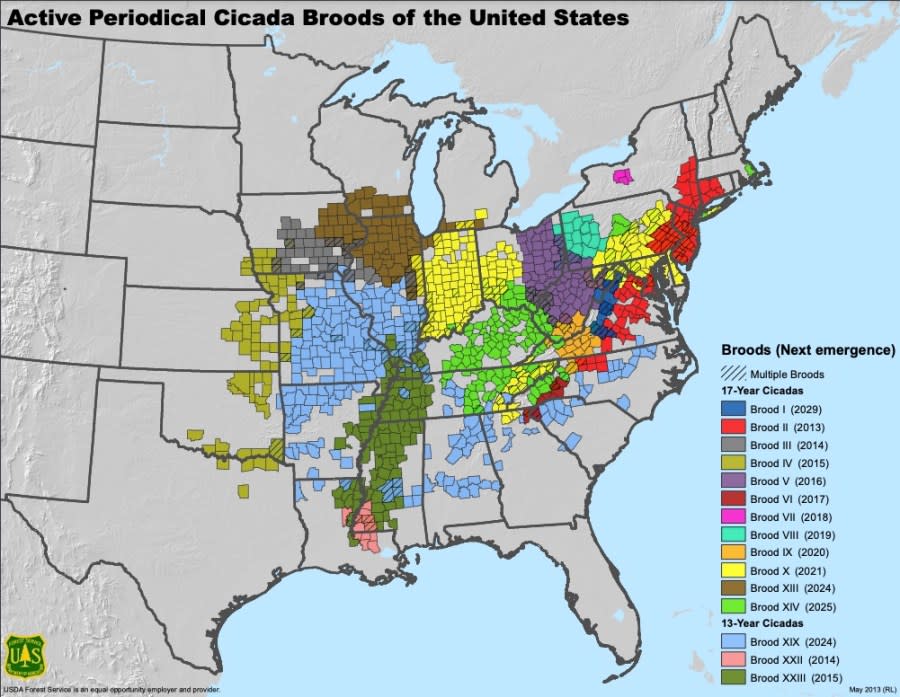Where the cicada broods are emerging in the US
ST. PETERS, Mo. — The familiar buzz of summer is back as cicadas have emerged in various locations, including St. Peters. Viewer-submitted photos show dozens of these insects on trees.
From late April through June 2024, the largest brood of 13-year cicadas, known as Brood XIX, will co-emerge with a midwestern brood of 17-year cicadas, Brood XIII. The St. Louis area is expected to mostly see the 13-year-brood.
Information from the Associated Press:
This event will affect 17 states, from Maryland west to Iowa and south into Arkansas, Alabama and northern Georgia, the Carolinas, Virginia and Maryland. A co-emergence like this of two specific broods with different life cycles happens only once every 221 years. The last time these two groups emerged together was in 1803, when Thomas Jefferson was president.
For about four weeks, scattered wooded and suburban areas will ring with cicadas’ distinctive whistling, buzzing and chirping mating calls. After mating, each female will lay hundreds of eggs in pencil-size tree branches. Then the adult cicadas will die. Once the eggs hatch, new cicada nymphs will fall from the trees and burrow back underground, starting the cycle again.
There are perhaps 3,000 to 5,000 species of cicadas around the world, but the 13- and 17-year periodical cicadas of the eastern U.S. appear to be unique in combining long juvenile development times underground with synchronized, mass adult emergences. There are two other known periodical cicadas in the world, one in northeast India and one in Fiji, but these have only four-year and eight-year life cycles, respectively.
For the latest news, weather, sports, and streaming video, head to FOX 2.


